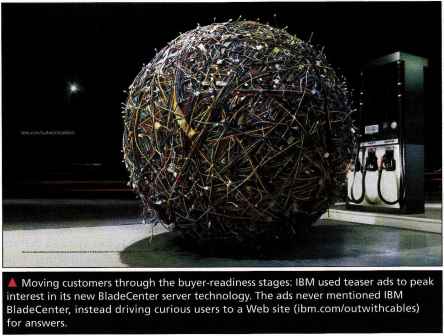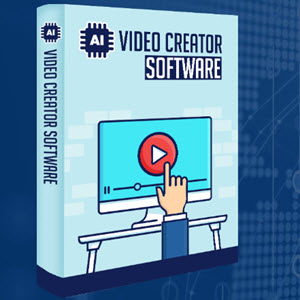Determining the Communication Objectives
Once the target audience has been defined, the marketers must decide what response they seek. Of course, in many cases, they will seek a purchase response. But purchase may be only the result of a long consumer decision-making process. The marketing communicator needs to know where the target audience now stands and to what stage it needs to be moved. The target audience may be in any of six buyer-readiness stages, the stages consumers normally pass through on their way to making a purchase. These stages include awareness, knowledge, liking, preference, conviction, and purchase (see \ Figure 14.3).
The marketing communicator's target market may be totally unaware of the product, know only its name, or know only a few things about it. The communicator must first build awareness and knowledge. For example, when Apple launched the iPhone in mid-2007, it first ran a teaser ad during the Oscars [film award show] to create initial awareness and curiosity.
Author I Now that we understand Comment | how communication works, it's time to turn all of those promotion mix elements into an actual marketing communications program.
Buyer-readiness stages
The stages consumers normally pass through on their way to purchase, including awareness, knowledge, liking, preference, conviction, and purchase.

The Oscars teaser commercial featured clips of characters from famous movies and television shows answering the phone with "Hello" (to check it out, go to YouTube and search "iPhone Oscars Teaser"). At the end came a rotating image of the new iPhone with only the simple text "Hello" and "Coming in June."
Similarly, as in a business-to-business context, A IBM used teaser ads to peak interest in its new BladeCenter server technology, which integrates servers, storage, and networking applications into one system, consolidating space and eliminating cables. BladeCenter print ads in IT magazines and videos released through YouTube made no mention at all of either IBM or BladeCenter. Instead, they showed a large, mysterious ball of cables and drove curious users to a Web site—www.ibm. com/outwithcables—for answers.
Assuming that target consumers know about the product, how do they feel about it? Once potential buyers knew about the iPhone, Apple's marketers wanted to move them through successively stronger stages of feelings toward the innovative phone. These stages included liking (feeling favorable about the phone), preference (preferring iPhone to other cell phone brands), and conviction (believing that iPhone is the best cell phone for them). Apple marketers used a combination of the promotion mix tools to create positive feelings and conviction. Advertising built an emotional brand connection and illustrated the iPhone's design and features. Press releases and other public relations activities helped build up anticipation for the release of the iPhone. And a packed Web site informed potential buyers about technical specs, FAQs, software updates, and rate plans with partner AT&T.
Finally, some members of the target market might be convinced about the product, but not quite get around to making the purchase. Potential iPhone buyers might have decided to wait for more information or for the price to drop. The communicator must lead these consumers to take the final step. Actions might include offering special promotional prices, add-ons, rebates, or premiums. Apple might send out e-mails to customers of other Apple products urging them to add the eye-catching iPhone to their collection of Apple goodies.
Of course, marketing communications alone could not create positive feelings and purchases for the iPhone. The cell phone itself must provide superior value for the customer. In fact, outstanding marketing communications can actually speed the demise of a poor product. The more quickly potential buyers learn about the poor product, the more quickly they become aware of its faults. Thus, good marketing communication calls for "good deeds followed by good words."
Moving customers through the buyer-readiness stages: IBM used teaser ads to peak interest in its new BladeCenter server technology. The ads never mentioned IBM BladeCenter, instead driving curious users to a Web site (¡bm.com/outwithcabies) for answers.
Continue reading here: Nonpersonal Communication Channels
Was this article helpful?
Readers' Questions
-
mantissa1 year ago
- Reply
